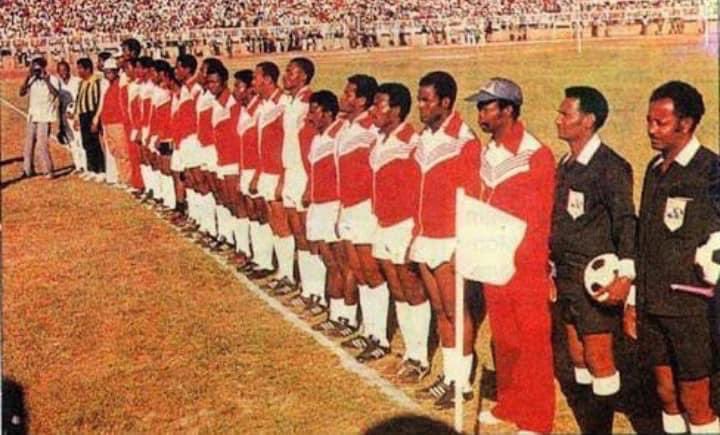
A SHORT ESSAY ON THE ROLE OF RANGERS FC IN POST-WAR RECOVERY FOR NDI IGBO
At the end of the war, the leadership class in Igbo land was in tatters and lacking in confidence. Many had died or been killed during the war. Some others had fled into exile and what was left in the

At the end of the war, the leadership class in Igbo land was in tatters and lacking in confidence. Many had died or been killed during the war. Some others had fled into exile and what was left in the


country lacked confidence. Their livelihoods were gone, their stature diminished, and their self-belief and judgment in question. A new leadership cadre was desperately needed but it was difficult to know where to find it.
The re-discovery of the dignity of the people of the
The re-discovery of the dignity of the people of the
East Central State was an improbable story of renewal built on sports and sports clubs. It all centered around a football club launched from the ruins of the war in Enugu in 1970. It was called Rangers International.
The rebuilding of Igbo dignity and identity at the end of the
The rebuilding of Igbo dignity and identity at the end of the
ruin of the war was emblematized in the rise and story of Enugu Rangers International. In their rise to national dominance, Rangers embodied and represented the hopes of a people. An entire generation was raised on the back of the exploits of Albert Onyeanwuna, Christian Chukwu,
Emmanuel Okala, Alloysius Atuegbu, Sylvanus Okpalla, etc.
There was a huge symbolism in their rise to dominance of the Nigerian soccer scene from the ruins of the war. It represented the story of a people who could discover the will to win again. A race that came out of the war,
There was a huge symbolism in their rise to dominance of the Nigerian soccer scene from the ruins of the war. It represented the story of a people who could discover the will to win again. A race that came out of the war,
shell-shocked, all of a sudden found in sports a reason to believe again.
Rangers International was formed on January 29, 1970, just two weeks after the Nigeria-Biafra war. Nicknamed “The Flying Antelopes” by their agility and skillfulness on the football pitch, Rangers remains
Rangers International was formed on January 29, 1970, just two weeks after the Nigeria-Biafra war. Nicknamed “The Flying Antelopes” by their agility and skillfulness on the football pitch, Rangers remains
the only Football Club in Nigeria that has never been relegated since inception. The name has also been same since formation in 1970.
Postwar Igboland was a very difficult and critical period for ndi Igbo and the Rangers’ motto—Through Difficulties to the Heights—embodying its
Postwar Igboland was a very difficult and critical period for ndi Igbo and the Rangers’ motto—Through Difficulties to the Heights—embodying its
mission, vision and history, reflected this situation with an inspiring tone. Rangers represents The Never-Say-Die spirit of the Igbo.
Rangers conquered Nigeria just after a year and conquered Africa 4 years later in 1975. They became the pride of Nigerian and African football
Rangers conquered Nigeria just after a year and conquered Africa 4 years later in 1975. They became the pride of Nigerian and African football
in the 1970s and 1980s. The club recorded numerous victories and attracted thousands to watch the games. The 25,000-capacity Stadium hosted about 40,000 spectators from different cities including Ogoja, Calabar, Onitsha, Port-Harcourt, Abakaliki and Umuahia.
After winning the 1974 double, including a 2–0 cup final win over the Mighty Jets, the Enugu players were given promotions at the Nigerian Sports Council and cars. In November 2008, Rangers became the first Nigerian clubside to be a public company and sell ownership stock.
We will hold a live conversation on Twitter (bit.ly/3W9kK8x) THIS EVENING at 7:00 PM to further discuss the role of sports in our post-war recovery.
Do join us!
#CentreForMemories
Do join us!
#CentreForMemories
• • •
Missing some Tweet in this thread? You can try to
force a refresh
















